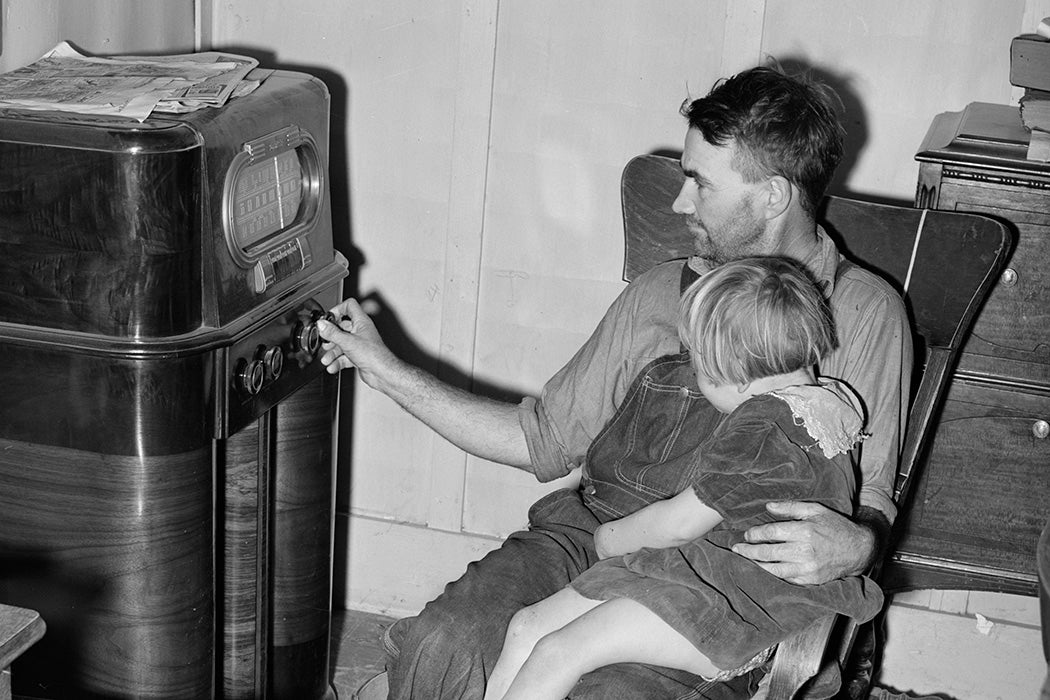The year 2020 (August 20, to be precise) marks the 100-year anniversary of the first broadcast by a federally licensed radio station, Detroit’s 8MK. The advent of real-time mass media changed the country in all kinds of ways. In the 1920s, media scholar Randall Patnode writes, one potential effect on many people’s minds was the redemption of the “backward” farmer.
As one Kentucky paper argued in 1923, “The people of these [rural] towns are out of touch with the rest of the world and their chief conversation is gossip.” The article concluded, “What these people need is radio.” Patnode writes that this patronizing view of farm life was particularly striking given that, throughout the nineteenth century, farmers were understood as the quintessential Americans. Thomas Jefferson called them the “chosen people of God.”
Patnode suggests a couple of reasons newspapers focused on “redeeming” the farm. One was that many people in fast-growing cities—including newspaper reporters and editors—had moved away from their family’s farm and had mixed feelings about agricultural life. Presenting farms as backward reaffirmed their choice to leave. Meanwhile, promising a remedy for that backwardness helped alleviate any guilt about those left behind. The second reason was commercial. Newspapers were supported by advertisements and had a deep interest in constantly promoting a narrative of progress through consumption.
As Patnode explains, the narratives found in both urban newspapers and rural magazines suggested that farmers would be interested in radios primarily out of practicality. By keeping abreast of information like commodity prices, they could optimize their operations for financial success. Publications also promoted radio as a source of status. Ads for radios in the farm press featured mansions with Roman columns and well-dressed listeners. One promised that “no other radio has such social prestige.”
In a story from Wireless Magazine, reprinted in local papers, one actress promised that radio productions like performances of Shakespeare’s plays would “emancipate” the small town. “The small village of the past, with its warped outlook on life, its ignorance of current events, its mean and petty superstitions, is in line to be completely ‘revamped,’ as it were,” she promised.
Weekly Newsletter
A 1930 book about radio by journalists Alfred Goldsmith and Austin Lescarboura described the radio’s near-miraculous transformation of a farmer:
Now, as the farmer walks down the street of the city, smooth-shaven, neatly dressed, self-possessed—nobody turns to stare… [He is] no longer a Rube but a man of the world, sympathetic with his fellow men, be they rural dwellers like himself or cooped up in two-room apartments on Monoxide Lane.
In reality, Patnode argues, it’s not clear that either market information or status improvement were top-of-mind for rural radio listeners. A 1925 survey by a Chicago station found that farm families’ first listening choice was barn dance music. It seems likely that many of them had little to no interest in having their communities “revamped” by sophisticated urbanites.







